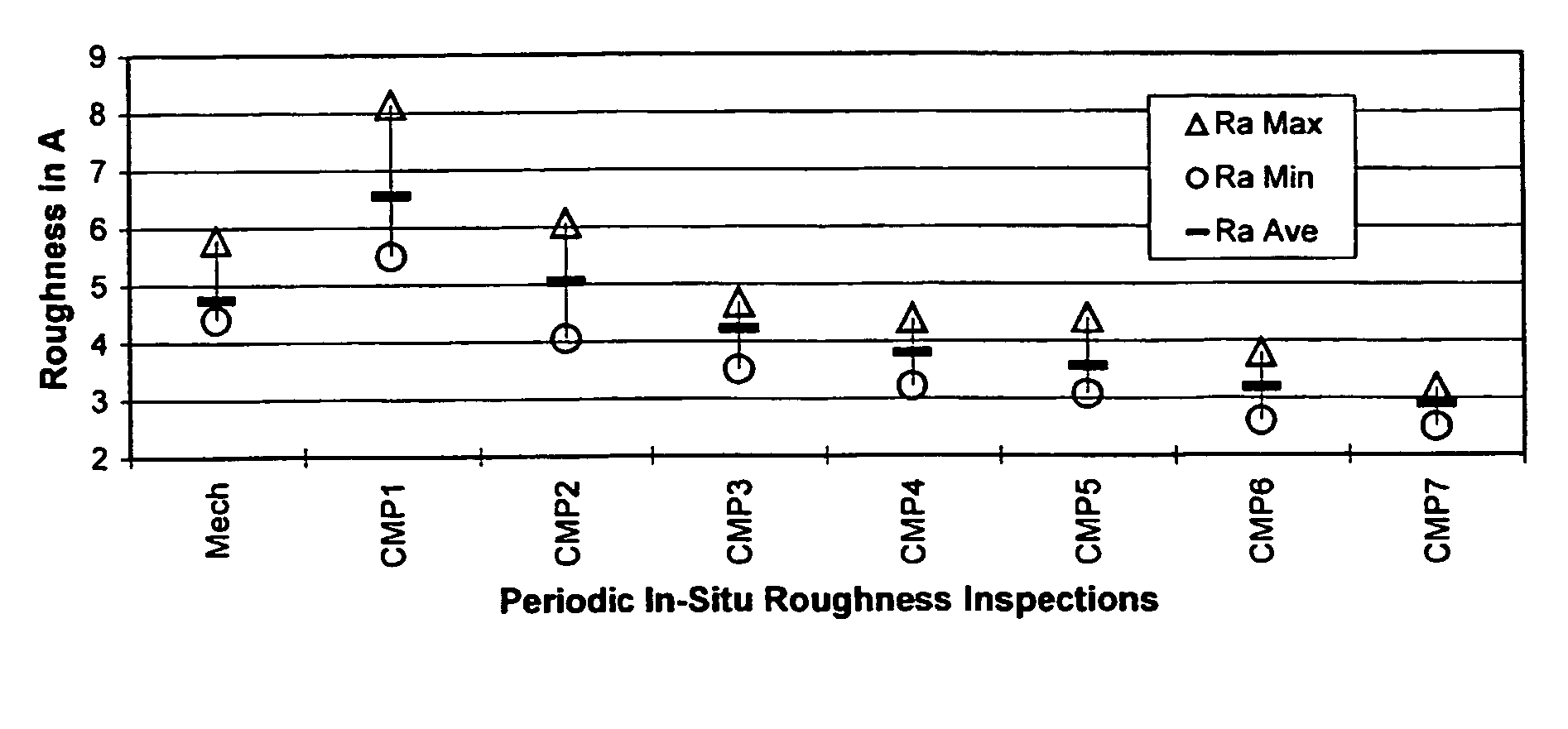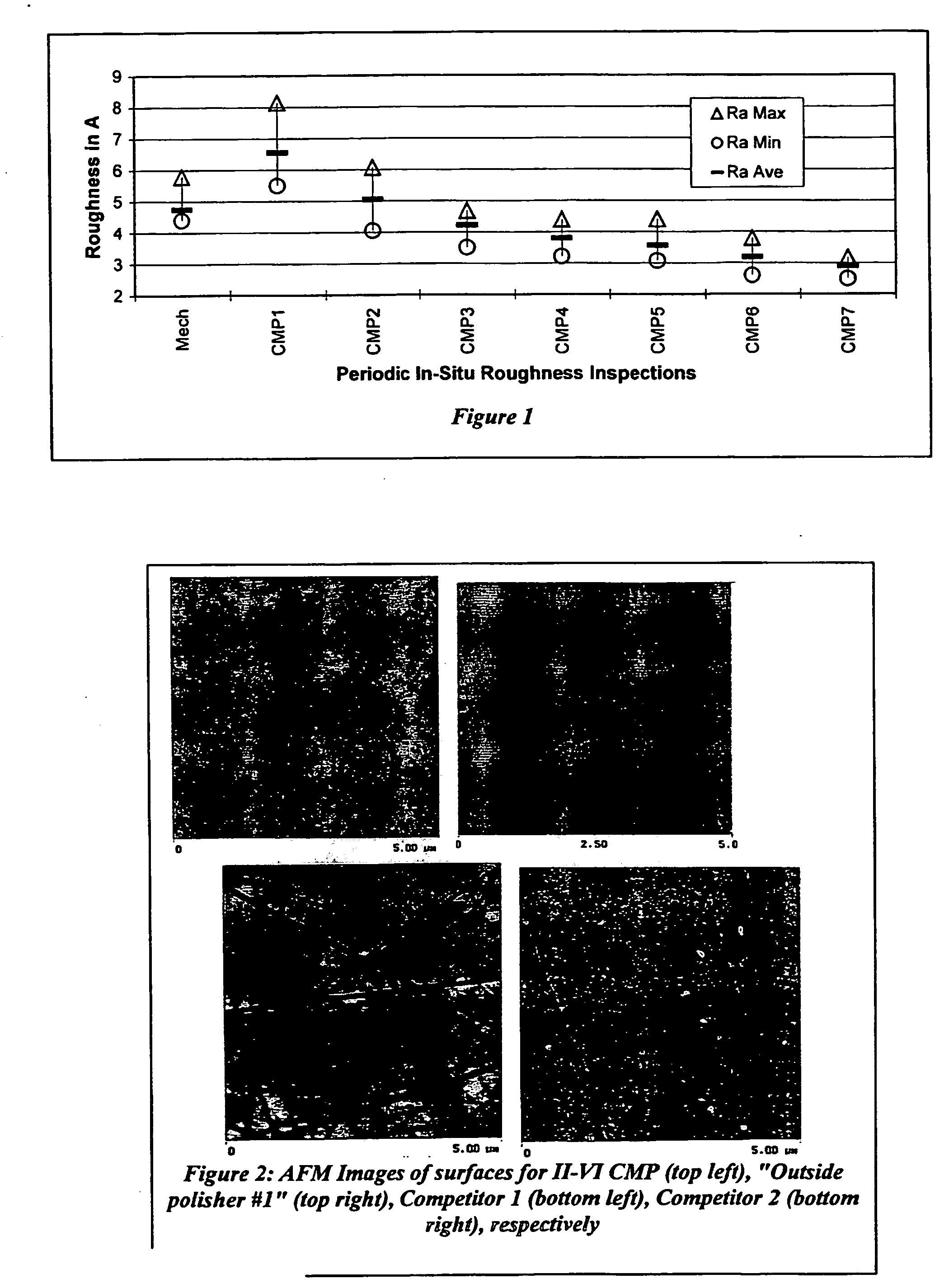Chemical-Mechanical Polishing of Sic Surfaces Using Hydrogen Peroxide or Ozonated Water Solutions in Combination with Colloidal Abrasive
a technology of hydrogen peroxide or ozonated water solution and colloidal abrasive, which is applied in the direction of polishing compositions with abrasives, grinding machines, manufacturing tools, etc., can solve the problems of affecting the activation of dopants, affecting the subsequent device production steps, and damaged surface materials, etc., to achieve the effect of increasing the process
- Summary
- Abstract
- Description
- Claims
- Application Information
AI Technical Summary
Benefits of technology
Problems solved by technology
Method used
Image
Examples
Embodiment Construction
[0017]An important feature of the process taught here lies in the method of oxidation of the surface of a SiC wafer by hydrogen peroxide and / or ozonated water, either separately or in combination. The removal of the oxide is accomplished by the abrasive friction of colloidal silica or alumina or by purely chemical reduction of the oxides in agents, such as HF, without damaging the SiC surface. When used separately or in combination these agents lead to a very planar, extremely low roughness surface (for example, <<3 Angstrom units measured by a Zygo white light interferometry, over a 350 um×250 um field of view, or <0.5 Angstrom units measured by atomic force microscopy (AFM) in a 5×5 um field of view). The resulting surface is also sub-surface damage free.
[0018]The state of the art of SiC polishing elsewhere produces a wafer surface which has a much higher level of surface roughness (3-15 Angstroms) and has evidence of some degree of sub-surface damage. State-of-the-art removal rat...
PUM
| Property | Measurement | Unit |
|---|---|---|
| size | aaaaa | aaaaa |
| temperatures | aaaaa | aaaaa |
| temperatures | aaaaa | aaaaa |
Abstract
Description
Claims
Application Information
 Login to View More
Login to View More - R&D
- Intellectual Property
- Life Sciences
- Materials
- Tech Scout
- Unparalleled Data Quality
- Higher Quality Content
- 60% Fewer Hallucinations
Browse by: Latest US Patents, China's latest patents, Technical Efficacy Thesaurus, Application Domain, Technology Topic, Popular Technical Reports.
© 2025 PatSnap. All rights reserved.Legal|Privacy policy|Modern Slavery Act Transparency Statement|Sitemap|About US| Contact US: help@patsnap.com


